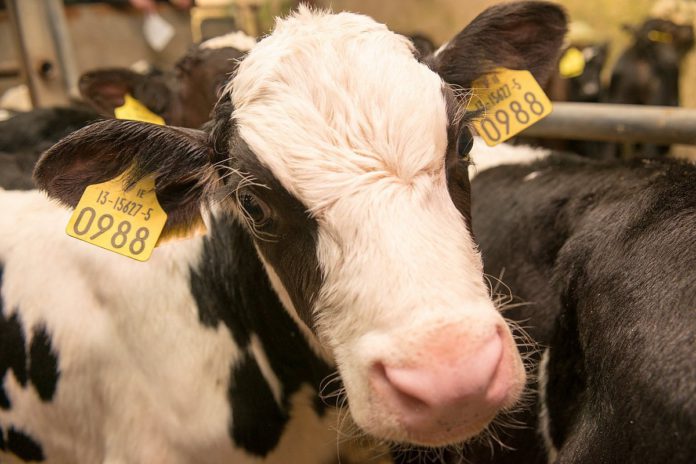Niall Kerins, Teagasc dairy advisor, Listowel, Co. Kerry, outlines how dairy farmers can prepare for calving 2021.
The New Year begins to unfold again and so too does the beginning of another farming year across the country.
Hopefully, you are well rested after the festive period which for many has been a different experience than usual.
The clock keeps ticking however as we are now just a short time away from the start of calving on spring calving dairy farms.
Over 1 million calves to arrive in three months
February and March are the peak calving months and over one million calves will arrive on dairy farms in the first three months of the coming year.
Improvements in dairy herd fertility (notably in compactness of calving) and expansion of the size of the national herd are big contributors to the scale and intensity we’re now seeing at calving time.
For all their benefits, however, such change is also increasing pressure on the available calving facilities.
Calving and calf rearing facilities
Calf rearing in an overcrowded building can have a negative impact on calf health. Insufficient ventilation or inadequate lying space are recipes for outbreaks of pneumonia, scour or both. Solutions are available.
The first step is to assess your calving facilitates now and make changes to increase the available space during the calving period.
Begin by establishing the number of cows likely to calve in the first three and six weeks of the calving season – typically the busiest time. For a 100-cow herd with 80% expected to calve in the first six weeks, this means that eighty cows will calve – close to two a day.
The second step is to establish the number of calves on your farm at peak.
Critical to this is the planned duration of surplus calves on-farm. Maintaining good calf health is critical.
Remember many of the first-born calves are the foundation stock of the next generation of your dairy herd in two years’ time.
They are highly vulnerable to disease and sickness if accommodation is not adequate. My colleagues who are experienced in contract rearing tell me that a sick heifer calf is ‘on the back foot throughout the rearing period’.
The negative impact on live weight gain can be seen up until she returns home.
Because calves spend up to 80% of their time lying down in the early stages of their lives, they require 1.7 – 2.2 square meters of lying space each.
Furthermore, they also need 7 square meters of air space each. Do the sums now on your calf accommodation. What options are available if you find yourself running short?
Calf accommodation
Modifying existing sheds to cater for calves can be a cheap and cheerful option but be mindful that effluent needs to be collected to remain nitrate complaint.
Alternately, group calf hutches can be purchased and placed on the corner of a silage slab. These group hutches can accommodate six to eight calves depending on size and reduce pressure in the main calf house during the busy period.
The purchase of one or two of these now can make a huge difference on overall calf health particularly if there is a delay in the sale of calves off-farm.
The building needs to be well ventilated and adequate quantities of straw applied as required.
In scenarios where you can smell ammonia from the calf house, the bedding needs to be removed and fresh straw applied.
This ammonia smell can induce respiratory issues in young calves, so the problem shouldn’t go unnoticed.
Temperatures
Air temperature ideally needs to be maintained at around 15 degrees Celsius in the calf house for calves younger than 21 days of age. This can be difficult to achieve given the variable Irish spring weather.
Maintaining such a temperature means that the calf uses most of its feed for growth rather than the maintenance of body temperature.
Animal Health Ireland will publish its latest guidelines on calf accommodation in the coming weeks.
The 1 2 3 rule
Calves are born without antibodies and need to receive good quality warm colostrum as soon as possible after birth.
The three, two, one rule has stood the test of time when feeding colostrum.
This is three litres of colostrum within two hours of birth from the first milking from the calf’s dam.
The three litres are based on the calf receiving 8.5% of its bodyweight of a quality colostrum as a first feed and thus is based on a birth weight of 35 kg.
Lighter calves can manage with slightly less and heavier calves will require more for adequate protection.
The navel is a direct line for infection to enter into the calf after birth. It is good practice to disinfect the navel with iodine to prevent infection entering through the navel.
Colostrum quality and stomach tubing
Some cows produce better quality colostrum than others, so testing colostrum with a refractometer is useful exercise.
A reading of 22% or greater on the refractometer is an indicator of good quality colostrum.
In the interests of hygiene, farmers who choose to stomach tube newborn calves with colostrum, should remember to use a different stomach tube bottle when administering electrolytes to sick calves.
Distinguish the two bottles by marking them with coloured tape.
More advice on preparing for calving 2021 on Irish dairy farms can be found here.





